Madoryx pseudothyreus bahamensis
Melichar and Rezac [2014]
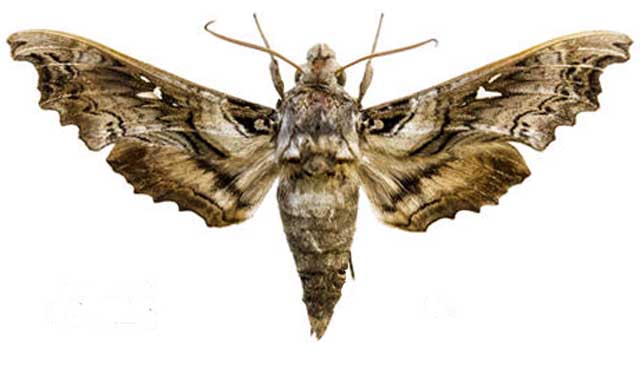
Madoryx pseudothyreus bahamensis HT male (verso), 72mm, Bahamas,
courtesy of Sphingidae Museum Pribram, creative commons.
This site has been created by Bill Oehlke.
Comments, suggestions and/or additional information are welcomed by Bill.
TAXONOMY:
Family: Sphingidae, Latreille, 1802
Subfamily: Macroglossinae, Harris, 1839
Tribe: Dilophonotini, Burmeister, 1878
Genus: Madoryx Boisduval, [1875] ...........
Species: pseudothyreus Grote, 1865
Subspecies: bahamensis Melichar and Rezac [2014] |
DISTRIBUTION:
The Bahamian False-windowed Sphinx, Madoryx pseudothyreus bahamensis
(Wing span: 2 5/8 - 2 3/4 inches (6.6 - 7.2 cm)), flies in the Bahamas.
The wing margins are scalloped. The upperside of the forewing is brown with dark brown and tan markings.
The forewing has a V-shaped white spot near the center of the costa.
This moth, Madoryx pseudothyreus bahamensis, was prevsiously included with Madoryx pseudothyreus pseudothyreus whose holotype
is from Cuba. Specimens from the Bahamas are now, as of 2014, classified as
Madoryx pseudothyreus bahamensis while those from Florida are now classified as Madoryx pseudothyreus floridensis.
FLIGHT TIMES:
There are probably several flights throughout the year in the Bahamas.
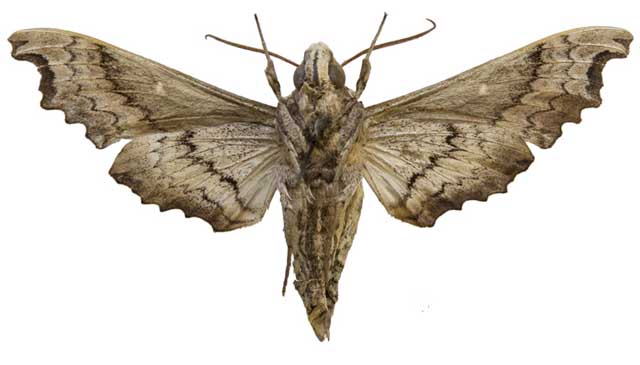
Madoryx pseudothyreus bahamensis HT male (verso), 72mm, Bahamas,
courtesy of Sphingidae Museum Pribram, creative commons.
ECLOSION:
Moths emerge from pupae in thin-walled cocoons under leaf litter.
SCENTING AND MATING:
Females call in the males with a pheromone released from a gland at the tip of
the abdomen. Adults nectar at flowers, including petunia and Asystasia gangetica at dusk.
EGGS, LARVAE, PUPAE:
Females probably lay eggs on evening primrose (Onagraceae). In Florida subspecies floridensis larvae have been found on
Black Mangrove (Avicennia germinans). Probably all subspecies utilize that host.
Larvae pupate in cocoons spun amongst leaf litter.
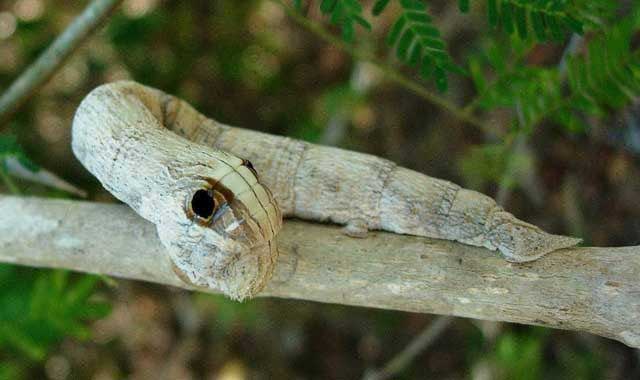
Madoryx pseudothyreus subspecies fifth instar, on black mangrove,
courtesy of Bart Coppens.
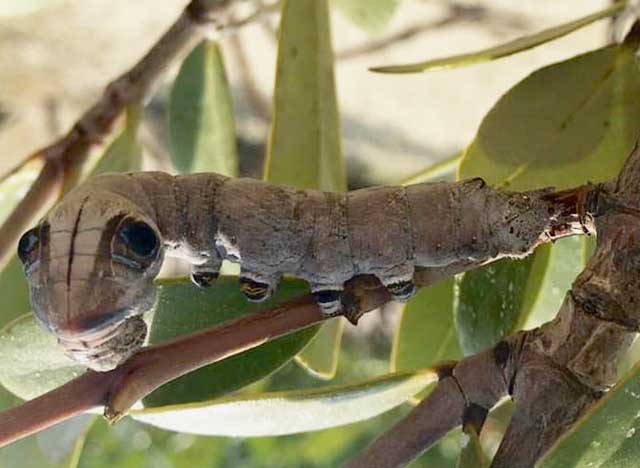
Madoryx pseudothyreus bahamensis fifth instar, on black mangrove,
Abaco, Bahamas, December 24, 2018, courtesy of Alec Elysia.
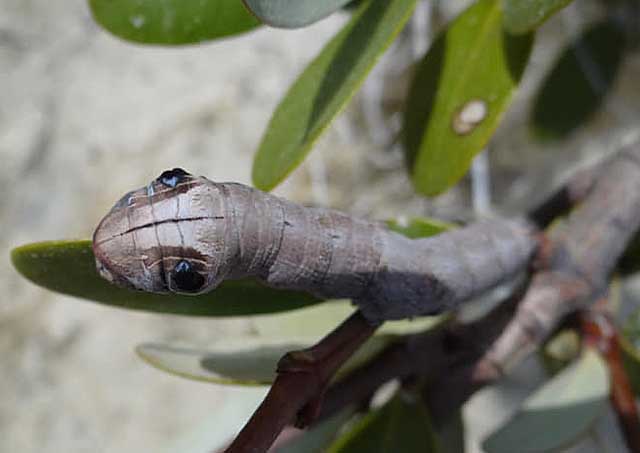
Madoryx pseudothyreus bahamensis fifth instars, on black mangrove,
Abaco, Bahamas, December 24, 2018, courtesy of Alec Elysia.
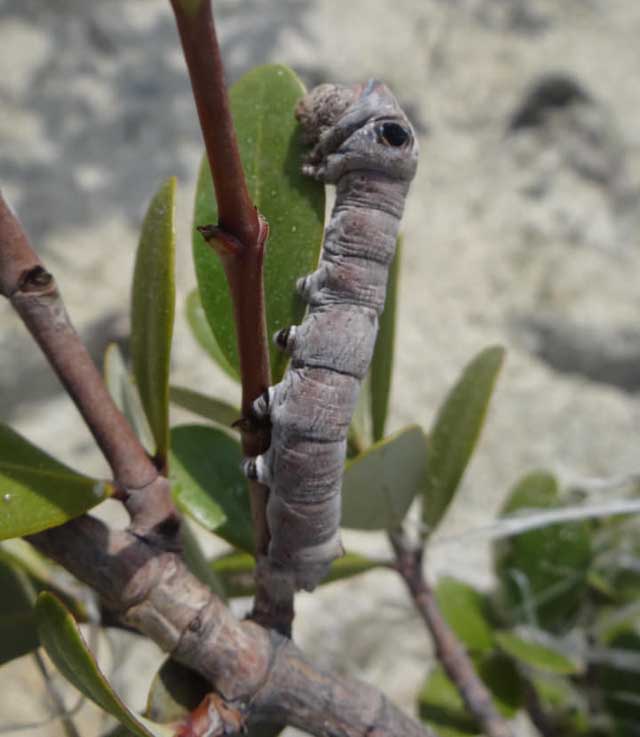
Madoryx pseudothyreus bahamensis fifth instar, on black mangrove,
Abaco, Bahamas, December 24, 2018, courtesy of Alec Elysia.
The larva depicted above, courtesy of Alec Elysia, are from the Bahamas, and would be classified as Madoryx pseudothyreus bahamensis,
I suspect they are almost identical to the larva of the nominate subspecies fom Cuba as well as of Madoryx pseudothyreus floridensis from southern Florida.
Return to U. S. A. Table
Return to Sphingidae Index
Return to Dilophonotini Tribe





